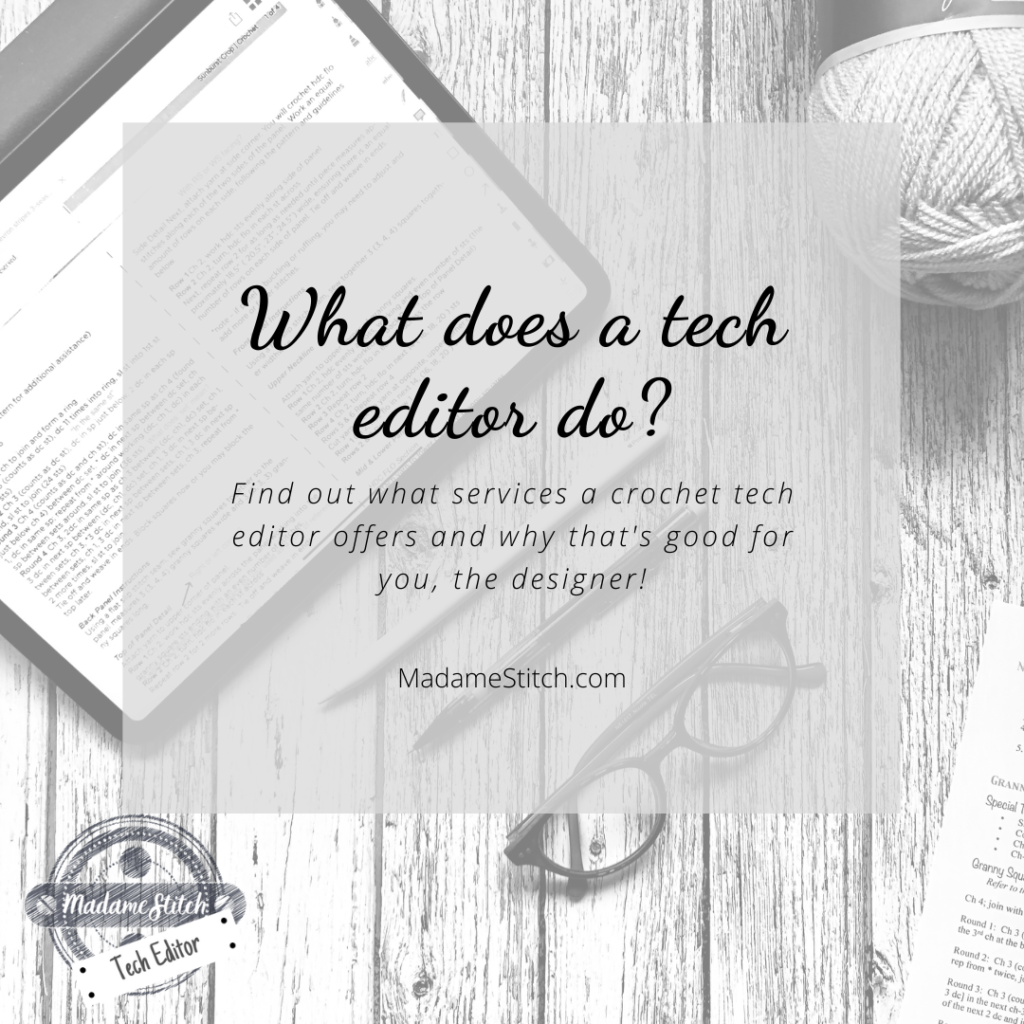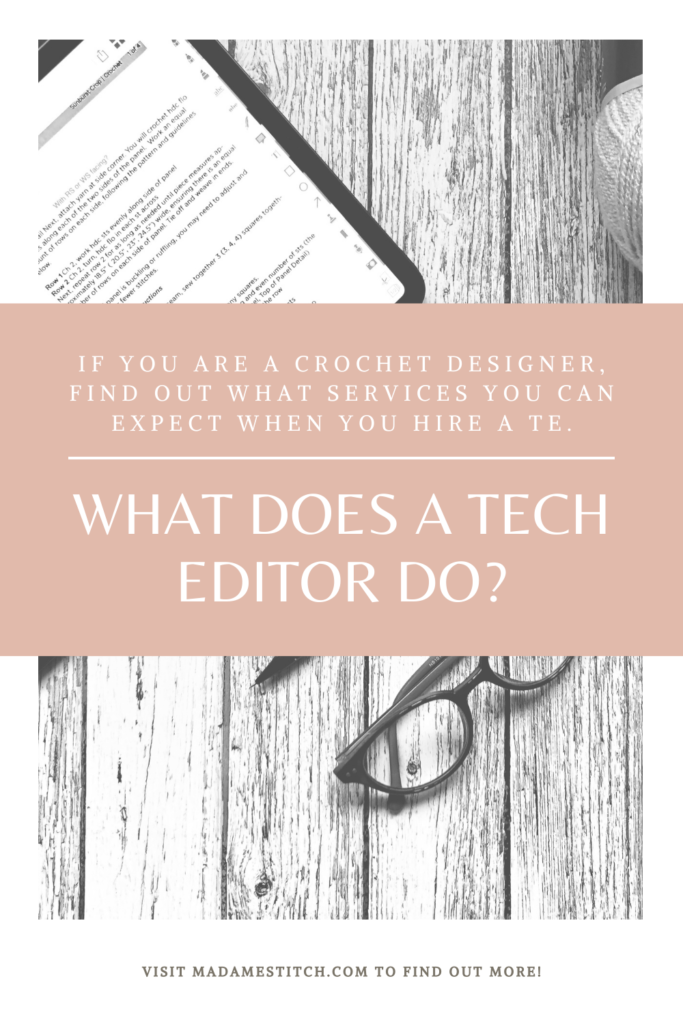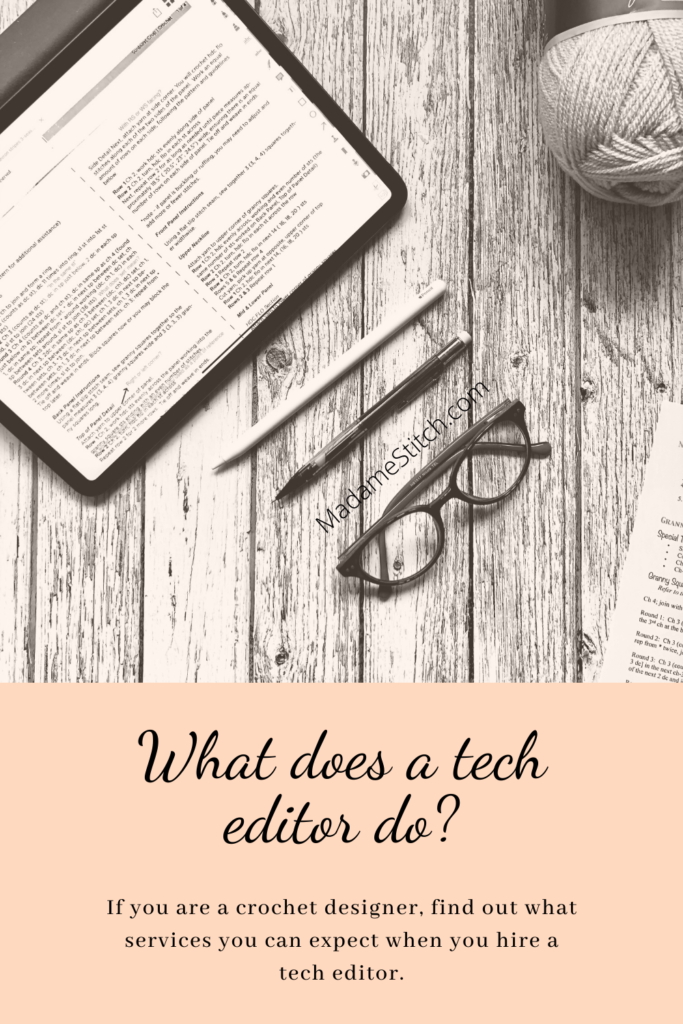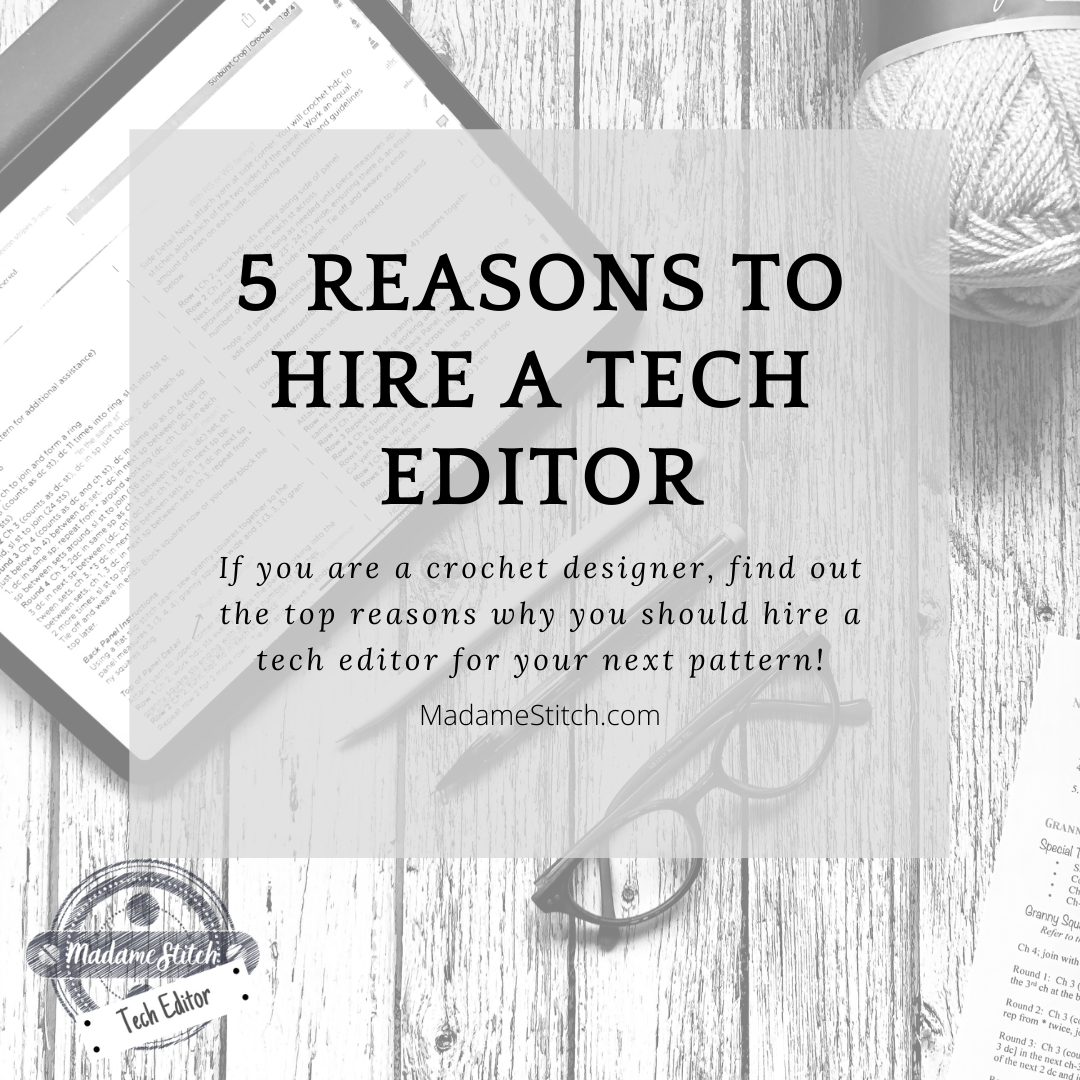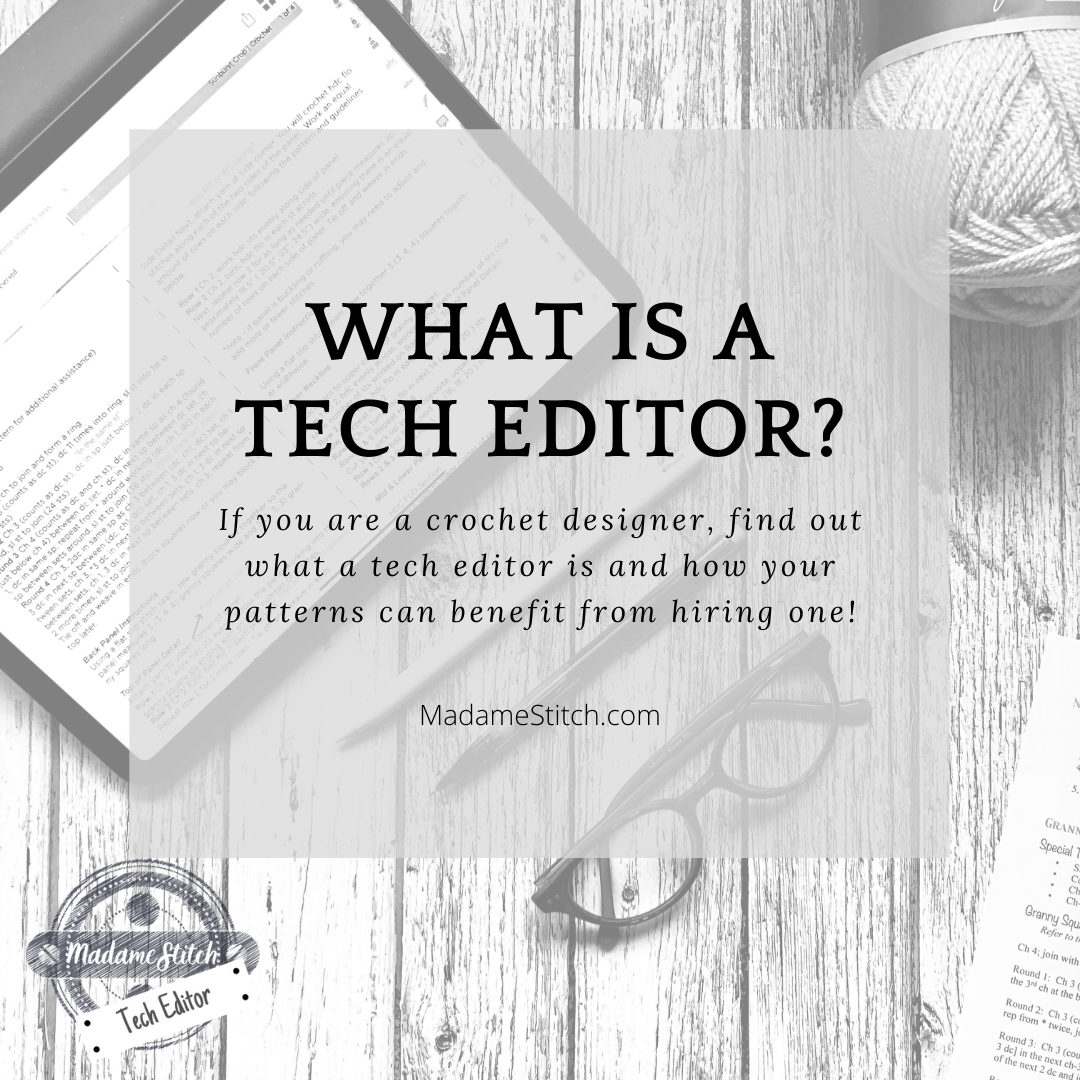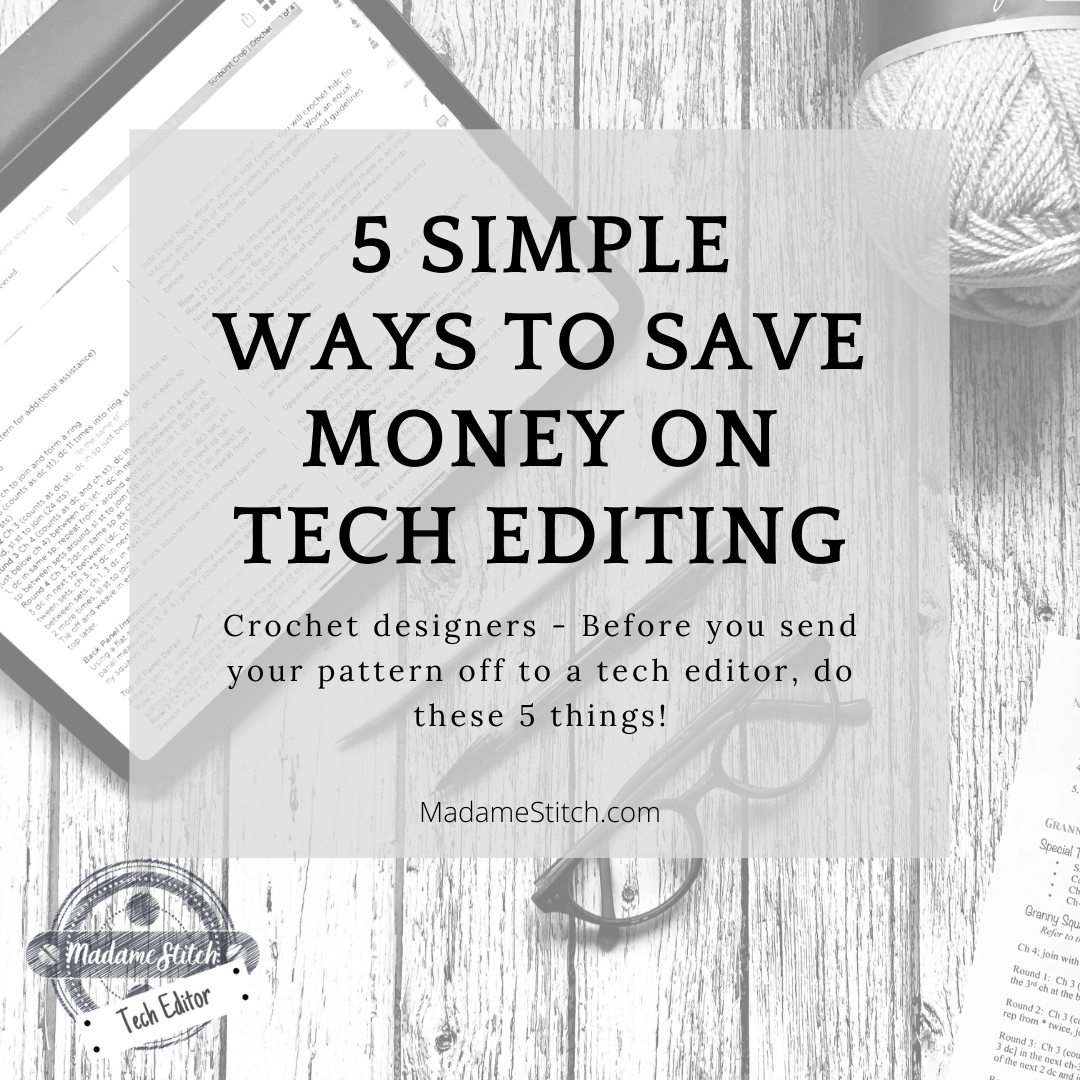What will a tech editor do for you?
You know what a tech editor is and you know the top reasons why you should hire one. But, what specifically can a tech editor do for you? And, what won’t they do for you? Here are some things you can expect.
A tech editor proofreads the pattern for errors and inconsistencies.
This is where that “eye for detail” comes in handy. Errors in spelling, grammar, punctuation, spacing, etc. will generally jump off the page and be obvious to a great tech editor. Along with errors, inconsistency in your written instructions make it difficult for your customer to understand your instructions. So, your tech editor will catch these discrepancies and find a way to apply consistency throughout your pattern. And, when you’ve had several of your patterns tech edited by the same person, she will begin to easily see any inconsistencies within your previous patterns.
A tech editor compares schematics and charts to the written instructions.
Not all patterns include schematics or charts. But, when they do, the measurements on the schematic and the symbols on the chart should match the written pattern. On the schematic, all measurements should be accounted for and the drawing should roughly match the shape of your finished object. Color work charts should include colors that closely match the colors called for in the pattern. Filet crochet charts should be a good representation of the finished object. Some customers will prefer to read the pattern and others will prefer to read the charts and schematics. Both should match and be correct.
A tech editor checks for consistent style and wording in the instructions.
You might not think consistency is necessary, but it’s actually a HUGE part of pattern writing. For instance, when your patterns are consistent from one to the next, you will begin to build a recurring customer. That’s a really good thing! The customer will know what to expect from your patterns, and the dazzling designs will bring them back again and again.
Consistency is also key in how you word your instructions. In many cases, a set of instructions will occur in multiple places throughout the pattern. If those instructions are worded differently in each place, your customer may become confused about what you’re asking them to do. For instance:
“Row 2: Ch 1, turn, etc…” means the same thing as “…turn. Row 2: Ch 1, etc…”
However, if you use both of those instructions, it may get confusing as to where you want the maker to turn and what to do after that turn.
One way to ensure consistency in the wording and formatting is to create a Style Sheet for your patterns. I won’t get into it here, but a Style Sheet shows capitalization, punctuation, ways to write instructions, formatting, etc. that are specific to your patterns. If you don’t have one, working with your tech editor to create one can provide a valuable tool for your design business. Keep in mind, though, that’s an extra service!
[wpipa id=”7890″]
A tech editor checks all of the math and ensures that stitch counts are correct.
Can your design be made in different sizes? If you’ve had your design graded, your tech editor will plug all of the numbers into a spreadsheet and check your calculations against the gauge to be sure everything is correct. And, if the measurements look ‘off’, she can catch that, too.
Does the stitch count change anywhere in your pattern? If so, your tech editor will check to make sure all of the math is correct against the instructions where decreases or increases are made.
If your pattern has gauge listed, your tech editor will check to be sure the gauge matches the yarn and hook you’ve chosen. She’ll also check to be sure the finished measurements you have and the stitch counts in your pattern are correct when calculated against your listed gauge.
A tech editor ensures that all parts of a pattern are present and accounted for.
Have you listed all of the materials needed? Are there pattern notes included to help the maker better understand the instructions? Do you have gauge and finished sizes listed? How about photos? Photos can be helpful, especially if they show where a stitch should be made or where a special technique is used. A great tech editor will make sure you have included all the parts necessary for the maker’s success.
[wpipa id=”7735″]
What other services might a tech editor offer?
Some tech editors will offer additional services such as creating schematics (the drawing that shows all the measurements in your design), a crochet chart (think filet, color work, stitches) and grading.
A word about grading: You will need 2 people to check your pattern if you have not done your own grading. The person doing the grading calculations should not be the person checking the calculations. Remember, that’s like being your own tech editor and that’s when mistakes don’t get caught. So, if your TE does the grading for you, you will have to find a second TE to tech edit the pattern.
And, as I mentioned before, your TE may be willing to help you create a Style Sheet, especially if she has been working on a number of your patterns.
[wpipa id=”7733″]
What a tech editor won’t do…
You can’t expect your tech editor to write the pattern for you. She usually doesn’t create graphics or take photos. Most tech editors won’t format the pattern for you, either. These are services that, unless they are specifically listed on the TE’s website, you can’t expect from them.
These are things you should probably learn to do yourself anyway. You know the design better than anyone. Plus, you can save a minor fortune by getting free or inexpensive programs in order to do these things for yourself. It just takes a bit of time and practice to hone the additional skills you need and is well worth the effort.
In the next installment of the Tech Editor series, I’ll talk about the things you can do before hiring a tech editor that will save you money on your tech editing job.
In the meantime, sign up for the email list ☟ to be sure you don’t miss the next installment along with all the great news coming from me, MadameStitch!

